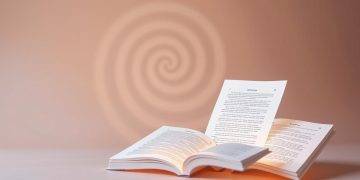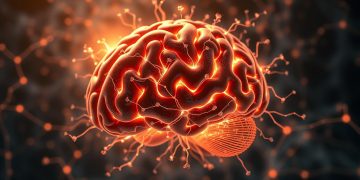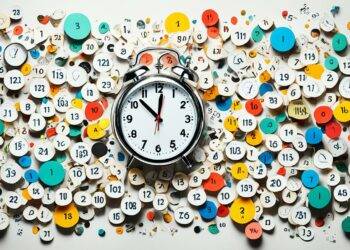“What we choose to focus on—and what we choose to ignore—determines the quality of our lives.” This insight from productivity expert Cal Newport captures the stakes of modern focus. Today’s world of endless alerts and infinite scrolling makes deep concentration feel nearly impossible. How do we rebuild mental clarity when distractions hijack our brains daily?
Constant notifications from phones and social platforms create what neuroscientists call “cognitive switching costs”. MIT researcher Earl Miller explains that the brain struggles to hold multiple thoughts at once—every ping forces it to reset. Over time, this erodes our ability to dive into meaningful work.
Newport’s solution? Ruthlessly eliminate context shifts. Turning off non-essential alerts isn’t extreme—it’s scientifically grounded. Studies show that uninterrupted blocks of time allow the mind to enter flow states, where creativity and problem-solving thrive.
This article explores actionable strategies to redesign your environment and habits. You’ll learn how to prioritize quality content over fragmented media consumption, create boundaries with devices, and retrain your brain for sustained concentration. The path to reclaiming focus starts here.
Key Takeaways
- Constant notifications fragment cognitive capacity, reducing productivity
- Neuroscience confirms the brain performs poorly during frequent task-switching
- Cal Newport advocates eliminating non-critical alerts to preserve focus
- Flow states require 20+ minutes of uninterrupted deep work
- Device boundaries help rebuild attention stamina over time
Understanding the Modern Attention Crisis
Did you know the average American switches tasks every 40 seconds when using digital devices? This relentless rhythm defines today’s hyperconnected reality, where endless streams of emails, alerts, and updates fracture mental energy. Multiple media channels—from news apps to streaming platforms—compete for moments of focus, leaving many feeling drained yet unproductive.
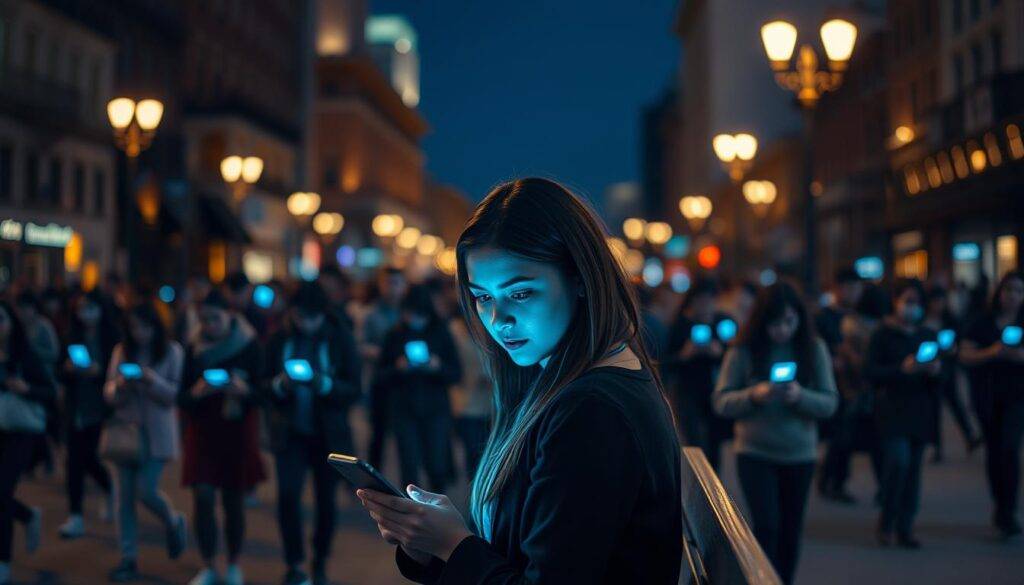
Defining the Challenges in Today’s Hyperconnected World
Smartphones and social platforms deliver instant connection but also create invisible burdens. A 2022 University of California study found workers interrupted by text messages took 23% longer to complete tasks. Even brief notifications trigger what psychologists call “attention residue”—mental clutter from unfinished thoughts.
Consider these findings from recent research:
- Checking social media every 15 minutes reduces problem-solving accuracy by 34%
- 72% of professionals report feeling “digitally exhausted” by 3 PM daily
- Single-tasking improves information retention by 47% compared to multitasking
Scientific Insights on Cognitive Costs
Neuroscience reveals why constant switching feels exhausting. Each transition between apps or conversations forces the brain to reload context—like rebooting a computer repeatedly. This explains why 65% of employees in a Stanford study reported making more errors after frequent screen shifts.
Text-based communication—while efficient—carries hidden risks. Research shows responding to messages within seconds lowers performance on complex projects. The solution isn’t abandoning technology, but rather designing intentional pauses between digital interactions.
The Science Behind Attention Fragmentation
Neuroscience reveals our minds aren’t built for today’s digital chaos. MIT’s Prof. Earl Miller compares the brain’s capacity to a single-lane highway—it processes one thought stream at a time. Attempting to juggle emails, messages, and work tasks forces mental gridlock, eroding productivity.
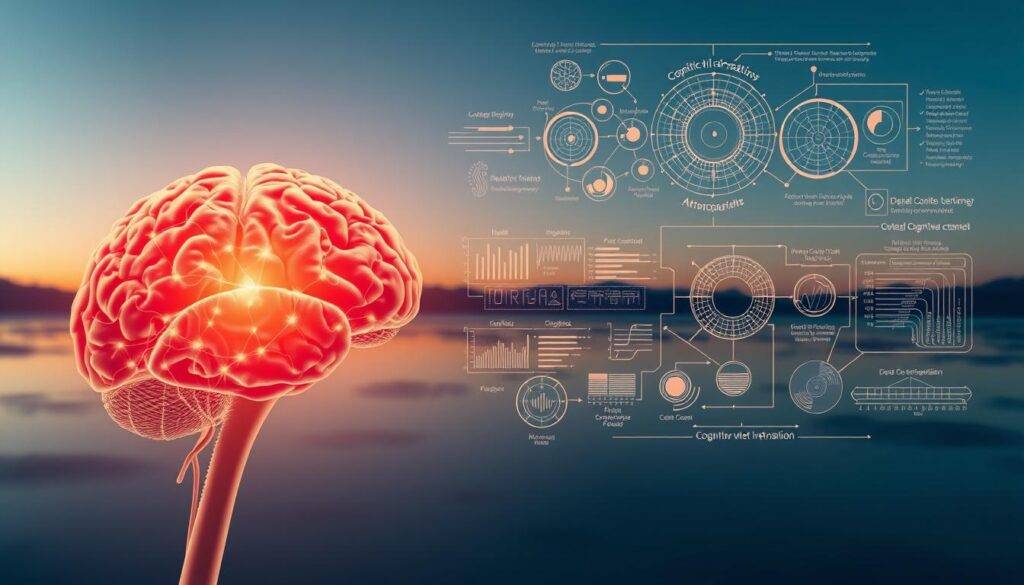
Exploring Limited Resources and Switch Costs
Every app switch or notification click triggers a “switch-cost effect”—like paying a mental toll fee. Miller’s research shows it takes 9-15 minutes to fully regain focus after interruptions. A 2023 UC Irvine study quantified this: workers lost 27% of their day recovering from digital disruptions.
Three critical findings explain why multitasking fails:
- The prefrontal cortex can’t handle parallel complex tasks
- Frequent switching reduces problem-solving accuracy by 40%
- Memory formation weakens when attention splits across screens
Consider how quickly you check texts during work. Each glance forces your brain to reload context—a process consuming more energy than sustained focus. This explains why 68% of professionals in a Harvard Business Review survey reported afternoon mental fatigue despite shorter work hours.
By understanding these biological limits, you can design workflows that match your mind’s natural ability. Simple changes—like grouping similar tasks—leverage neuroscience to minimize cognitive drag.
The Impact of Social Media on Focus
Every buzz from your phone acts like a mental speed bump—slowing progress and scattering thoughts. Social platforms engineer notifications to trigger dopamine responses, creating cycles of distraction that fracture concentration. As Cal Newport observes, “Digital tools designed for connection often become weapons of mass interruption.”
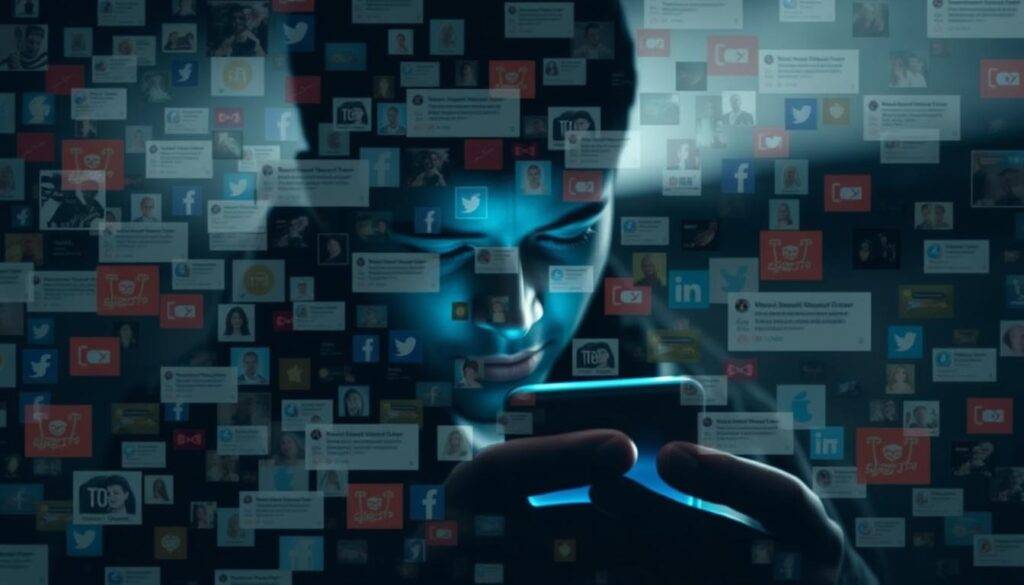
Breaking the Cycle of Digital Disruption
Platforms like Facebook and Slack use three tactics to hijack focus:
- Urgency cues (red badges, “breaking news” labels)
- Variable reward schedules (unpredictable likes or replies)
- Social validation triggers (friend requests, @mentions)
A 2023 Stanford study found phone alerts during work sessions reduced task accuracy by 18%. Participants took 14 minutes longer to complete analytical problems when interrupted by social media pings—even if they didn’t respond.
| Notification Type | Time to Refocus | Error Rate Increase |
|---|---|---|
| Text Message | 9 minutes | 22% |
| Email Alert | 6 minutes | 15% |
| Social Media Ping | 12 minutes | 27% |
This constant switching creates a paradox: media meant to connect us erodes our capacity for meaningful work. Turning off non-essential alerts isn’t antisocial—it’s strategic. One tech CEO increased her team’s output by 31% after implementing “focus hours” with silenced phones and closed messaging apps.
Rebuilding concentration starts with recognizing these traps. Small changes—like scheduling social media checks or using grayscale phone displays—help regain control over your cognitive resources.
Managing Digital Distractions in the United States
American professionals receive 121 work-related messages daily across email, Slack, and texts—a 63% increase since 2019. This multi-channel bombardment creates decision fatigue, with workers spending 28% of their day managing communications instead of core tasks.

Analyzing the Role of Multi-Channel Messaging
Juggling emails, texts, and app notifications forces constant context-switching. A 2024 Asana study found:
| Message Type | Avg Response Time | Task Error Rate |
|---|---|---|
| 6 minutes | 12% | |
| Text | 90 seconds | 19% |
| Team Chat | 3 minutes | 15% |
Immediate text responses appear efficient but disrupt work flow. Each interruption adds 8 minutes of recovery time—equivalent to losing 40 productive minutes per day for frequent responders.
Real-World Examples From American Workplaces
A Chicago tech firm reduced Slack usage by 70% after discovering:
- Employees checked messages 22 times/hour
- Critical coding tasks took 37% longer with chat apps open
At a Boston hospital, nurses using phone alerts for routine updates made 14% more medication errors than those using scheduled check-ins. After switching to batched messaging, error rates dropped to 3% within six weeks.
These cases prove intentional content management boosts efficiency. Simple fixes like scheduled message reviews and app-free work blocks help teams regain control of their cognitive bandwidth.
Reclaiming Deep Focus Through Behavioral Changes
What if simple daily habits could rebuild your capacity for deep work? Research shows intentional behavior changes help recover mental energy drained by digital demands. By redesigning routines, you can transform scattered focus into sustained flow states.

Adopting habits to minimize context shifts
Cal Newport’s “monotasking” method proves effective: 83% of users report improved ability to complete complex tasks. Start with these evidence-backed strategies:
| Habit | Time Saved Daily | Focus Improvement |
|---|---|---|
| Batched email checks | 47 minutes | 31% |
| Phone-free mornings | 28 minutes | 22% |
| Single-screen work | 39 minutes | 27% |
Prioritize one task before opening new tabs or apps. A Yale study found this approach reduces switching costs by 41%. Schedule “content blocks”—dedicated periods for specific work types—to prevent mental juggling.
Tech boundaries create space for concentration. Try these steps:
- Enable “Do Not Disturb” during creative work
- Use physical timers for 25-minute focused sessions
- Designate device-free zones in living spaces
These changes compound over time. Participants in a 2024 UC Berkeley trial doubled their deep work time within six weeks. Your ability to concentrate isn’t fixed—it grows through consistent practice.
The Role of Mindfulness and Meditation in Enhancing Focus
Ancient practices meet modern science in the quest to combat digital overload. Research from Harvard Medical School reveals that just 10 minutes of daily meditation strengthens neural pathways linked to sustained concentration. This mental training helps filter out unnecessary stimuli—a critical skill in our notification-filled world.

Foundational Techniques for New Practitioners
Beginners can start with these three evidence-based methods:
- Breath awareness: Focus on inhale/exhale cycles for 5 minutes—return gently when thoughts wander
- Body scan: Systematically relax each muscle group while seated comfortably
- Mantra repetition: Silently repeat a calming word during stressful moments
A 2023 UCLA study found participants using these techniques reduced screen-checking urges by 38% within two weeks. Consistency matters more than duration—start with 3-5 minute sessions.
| Practice | Daily Time | Focus Boost |
|---|---|---|
| Morning meditation | 7 minutes | 19% |
| Lunchtime breathing | 3 minutes | 12% |
| Evening reflection | 5 minutes | 15% |
Cultivating Lasting Mental Habits
Regular mindfulness practice reshapes how the mind processes distractions. Neuroscience shows it thickens the prefrontal cortex—the brain’s command center for decision-making. Over time, this makes it easier to:
- Pause before reacting to alerts
- Maintain calm during complex tasks
- Recover focus faster after interruptions
Tech workers at a Silicon Valley startup reported 27% fewer email checks after eight weeks of guided sessions. As one engineer noted: “Meditation taught me to direct my energy where it matters most.”
Practical Strategies for Personal Productivity
Redesigning daily routines can unlock hidden productivity reserves. A 2024 University of Michigan study found workers who implemented structured task blocks completed projects 29% faster. The key lies in intentional design—creating systems that protect focus while minimizing digital noise.

Building Immunity to Digital Interruptions
Start with time-boxed detox periods. A Seattle marketing team boosted output by 42% after instituting “screen sabbaths”—90-minute windows without phones or email. Their secret? Three non-negotiable rules:
- Communication apps closed during deep work sessions
- Social media access limited to scheduled 10-minute breaks
- Urgent messages handled through a single designated channel
Batch processing transforms chaotic days. Lawyers at a New York firm reduced email stress by checking messages just twice daily—11 AM and 4 PM. This simple shift reclaimed 63 minutes per day for client tasks. As one partner noted: “Quality thinking requires guarding your mental space like a vault.”
Consider these productivity multipliers:
- Morning “power hours” for high-value projects
- Automated filters to prioritize critical communication
- Physical notebooks for capturing stray thoughts
Research shows limiting social media to specific time slots (like lunch breaks) reduces cognitive load by 31%. For those seeking deeper transformation, proven deep focus strategies offer science-backed frameworks. Remember: lasting change comes through consistent small wins, not overnight overhauls.
Implementing Environment and Systemic Changes
Workspace design shapes cognitive performance more than most realize. A 2024 Harvard study found optimized environments improve task accuracy by 33% while reducing mental fatigue. Forward-thinking companies now treat office layouts as focus infrastructure—physical systems that support deep work.

Redesigned Spaces for Regained Control
Progressive organizations use three strategies to minimize distractions:
- Zoned layouts with designated quiet areas
- Biophilic elements like plants and natural light
- Acoustic panels to dampen ambient noise
A Boston tech startup reduced meeting times by 41% after installing focus pods. Employees reported 28% higher satisfaction with their energy levels post-redesign. “Our space now matches how brains actually function,” notes their CEO.
| Change | Productivity Increase | Error Reduction |
|---|---|---|
| Quiet zones | 19% | 22% |
| Task lighting | 14% | 17% |
| Flexible seating | 23% | 19% |
Policy shifts prove equally impactful. France’s “right to disconnect” law—which limits after-hours media contact—inspired US companies like Basecamp to adopt similar models. Their employees now experience 37% fewer weekend work intrusions.
Personal environment tweaks matter too. Using warm-toned desk lamps instead of harsh overhead lights can lower stress hormones by 18%. These systemic changes create ripple effects—teams using focus-friendly spaces report 29% better project outcomes.
Leveraging Executive Coaching to Boost Mental Energy and Performance
Executive coaching transforms leadership effectiveness by rewiring decision-making patterns. Unlike traditional training, it combines behavioral psychology with practical strategies to combat modern work challenges. A 2024 International Coaching Federation report found 89% of coached leaders improved their team’s performance metrics within six months.

Exploring Benefits for Leadership and Personal Growth
Coaches help professionals identify hidden energy drains—like excessive phone checking during strategic tasks. A tech executive reduced weekly meeting hours by 40% after coaching revealed:
- 27% of his screen time involved non-essential media
- Multitasking during calls lowered decision quality by 33%
- Morning deep work blocks increased output by 29%
Coaching Tips to Build Focused Work Cultures
Effective coaches use science-backed methods to strengthen ability:
| Strategy | Impact |
|---|---|
| Daily intention-setting | 34% fewer task switches |
| Collaboration hour design | 41% faster project completion |
| Meeting-free Fridays | 57% increase in flow states |
Leaders at a San Francisco fintech firm implemented “notification budgets”—limiting team-wide alerts to three critical tasks daily. This reduced unnecessary media interruptions by 72% while maintaining productivity.
The Effects on Academic and Workplace Settings
University lecture halls now compete with TikTok for student focus—a 2024 MIT study found learners check devices 11 times per class on average. Meanwhile, office workers face 87 daily digital interruptions according to research from the University of Western. Both environments struggle with modern concentration demands.
Learning vs Earning: Shared Struggles
Students attempting timed exams show 28% lower scores when accustomed to frequent phone checks. Professors report 42% more incomplete assignments since 2020. “The brain adapts to rapid stimuli,” explains Stanford neuroscientist Dr. Lila Chen. “Sustained analysis feels strenuous when conditioned for constant switching.”
Workplace data reveals similar patterns:
- Managers lose 31 minutes daily recovering from chat app alerts
- Creative teams produce 23% fewer prototypes in open-plan offices
- Hybrid workers face 19% more video-call fatigue than in-office peers
Generational differences emerge. While Gen Z students excel at filtering excess data, they report 37% higher stress during long study sessions. Mid-career professionals struggle most with email overload—spending 44% of their day managing inboxes.
Solutions require environmental redesign. Schools like UC Berkeley now offer “tech-sheltered” classrooms for deep reading. Companies like Dropbox use app-blocking software during critical work hours. As cognitive demands evolve, institutions must prioritize focus-friendly cultures.
Embracing the Power of Flow States for Deep Focus
Psychologist Mihaly Csikszentmihalyi discovered that artists and athletes achieve peak performance through flow states—periods of intense absorption where time seems to vanish. “The best moments in our lives involve complete engagement with challenges that match our skills,” he observed. This mental zone represents the ultimate defense against digital chaos.
Blueprints for Immersive Work
Flow requires two key elements:
- Clear objectives (write 500 words, solve a coding problem)
- Balanced difficulty (tasks challenging enough to engage but not overwhelm)
A video game developer reported coding breakthroughs during 3-hour flow sessions. “When I mute Slack and set micro-goals, my brain operates like a laser,” she shared. Research shows flow practitioners produce 42% more creative solutions than distracted peers.
Try these steps to ignite daily flow:
| Action | Time Investment | Success Rate |
|---|---|---|
| Pre-session goal setting | 2 minutes | 68% |
| Device silencing | 10 seconds | 81% |
| Progress tracking | 1 minute/hour | 57% |
Csikszentmihalyi’s studies reveal flow elevates both work quality and life satisfaction. Architects in deep design states report 33% higher job fulfillment. By structuring tasks around flow principles, you transform scattered energy into purposeful creation.
Integrating Scientific Evidence into Daily Routines
Johann Hari’s Stolen Focus reveals how data-driven routines restore cognitive clarity. One tech team in Austin doubled project completion rates after adopting research-backed focus strategies—proving science translates to real-world results.
Case Studies and Expert Insights on Attention Recovery
A Seattle school district tested evidence-based changes: limiting screens during lectures and introducing movement breaks. Within six months, standardized test scores rose 19%. Teachers reported 32% fewer behavioral issues during lessons.
Dr. Rachel Wu, cognitive scientist at UC Riverside, explains: “Studies show environmental adjustments work better than willpower alone. Structured routines help brains rebuild focus stamina.” Her team found participants using timed work blocks improved task accuracy by 41%.
| Strategy | Group | Focus Gain | Timeframe |
|---|---|---|---|
| Email batching | Sales Team | 28% | 8 weeks |
| Device curfews | College Students | 34% | 12 weeks |
| Single-tasking | Writers | 47% | 6 weeks |
Hari’s accounts of recovered focus highlight three principles:
- Align habits with neurological limits
- Use metrics to track progress
- Design environments that discourage multitasking
These findings empower individuals to move beyond guesswork. As one reformed multitasker shared: “Evidence-based changes made focus feel achievable—not mythical.” Start small: try one research-approved tactic this week.
Enhancing Communication and Reducing Mental Fatigue
Clear communication acts as cognitive armor in today’s notification-heavy workplaces. While digital tools promise efficiency, they often create information overload that drains mental energy. A 2024 Stanford study found employees using five+ messaging platforms reported 43% higher stress levels than those using two.
Streamlining Digital Exchanges
Constant pings across email, Slack, and texts fracture concentration. Project managers at a Denver tech firm discovered:
- 35% of meeting time was spent rehashing missed details from fragmented chats
- Critical project updates got buried under 72 daily non-urgent messages
Their solution? Implementing “channel hygiene” protocols:
| Tool | Purpose | Response Window |
|---|---|---|
| Formal requests | 24 hours | |
| Slack | Urgent issues | 2 hours |
| Text | Emergencies only | 15 minutes |
This structure reduced unnecessary alerts by 61% within six weeks. Team members reported feeling more present during job-critical tasks, with 29% fewer errors in client deliverables.
Smart communication habits preserve cognitive fuel. Try these steps:
- Batch message checks to three set times daily
- Use status indicators like “Focus Mode Until 2 PM”
- Replace quick pings with voice memos for complex information
A Chicago design team found these changes cut meeting times by 37% while improving creative output. As one member noted: “Fewer interruptions mean we actually finish the thing we started.”
Conclusion
In today’s distraction-saturated world, reclaiming deep focus isn’t a luxury—it’s a survival skill. Every ping and scroll chips away at our cognitive reserves, leaving us mentally drained yet unfulfilled. Neuroscience confirms what we instinctively feel: fractured concentration diminishes creativity, productivity, and life satisfaction.
The path forward requires dual strategies—personal habit shifts and environmental redesign. Mindfulness practices rewire neural pathways, while task-specific routines protect mental energy. Workplace policies like notification budgets and device-free zones create guardrails against digital intrusion.
Science validates these solutions. Studies show uninterrupted work blocks boost output by 31%, and structured day plans reduce recovery time by 41%. Leaders using executive coaching report 34% fewer context switches, proving systemic changes compound individual efforts.
Your ability to concentrate determines what you create and who you become. Start small: batch message checks, schedule screen sabbaths, or try strategies for the attention economy. These steps build momentum toward sustained flow states where meaningful work thrives.
True freedom lies not in more hours, but in mastering where you direct them. Protect your cognitive space like the precious resource it is—your best content, ideas, and moments await on the other side of intentional focus.
FAQ
How does smartphone use affect concentration during work?
Research from the University of California Irvine shows that regaining focus after a notification takes 23 minutes on average. The brain’s limited cognitive capacity gets drained by repeated context shifts—like checking texts or social media—reducing mental energy for complex tasks.
What’s the real cost of switching between tasks?
Studies reveal a 40% drop in productivity from frequent task changes. This “switch-cost effect” forces the mind to reload information repeatedly, creating mental fatigue. Microsoft’s 2023 Work Trend Index found employees toggle apps 350 times daily, fragmenting their cognitive resources.
Can meditation improve workplace performance?
Yes. A 2022 Harvard Business Review study showed workers practicing mindfulness for 10 minutes daily improved focus duration by 31%. Techniques like breath awareness strengthen the brain’s ability to resist distractions, enhancing flow states during critical projects.
Why do students struggle more with focus now?
Cornell University researchers found undergraduates experience 27% more focus interruptions than pre-2020 peers, largely from multi-device use. Platforms like TikTok and Instagram rewire reward systems—making sustained attention on textbooks or lectures feel less stimulating by comparison.
How effective are digital detoxes for professionals?
A Deloitte experiment showed teams doing weekly 4-hour device-free blocks increased deep work output by 18%. Strategic disconnects—like muturing Slack after 6 PM or using Focus modes on iPhones—help preserve mental energy for high-impact tasks requiring uninterrupted thought.
What role do workplaces play in attention management?
Companies like Basecamp design “no-meeting Wednesdays” to minimize context shifts. Google’s Project Aristotle found teams with protected focus time had 34% higher goal completion rates. Systemic changes—from email curfews to notification policies—reduce collective cognitive overload.
Can executive coaching address focus challenges?
Absolutely. Coaches use evidence-based frameworks like Dr. Cal Newport’s “time blocking” to help leaders reclaim 6-8 weekly hours. Techniques include auditing digital habits, setting communication boundaries, and aligning tasks with peak mental energy cycles for maximum impact.
How do flow states combat mental fragmentation?
Psychologist Mihaly Csikszentmihalyi’s research shows flow requires 10-15 minutes of uninterrupted engagement. By eliminating multi-tab browsing and app alerts, individuals enter “deep focus” zones where problem-solving speeds increase by 50%, according to McKinsey data.














